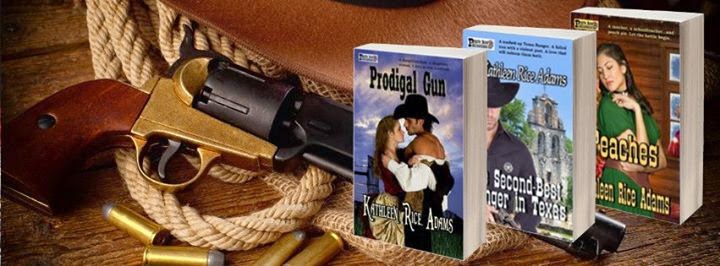 |
| William Prescott "Wild Bill" Longley |
The era produced some hard men. None were harder than Wild Bill Longley.
The sixth of ten children, William Prescott Longley was born October 6, 1851, on a farm along Mill Creek in Austin County, Texas. His father had fought with Sam Houston at San Jacinto. Little is known about Wild Bill’s youth until December 1868, when, at the age of seventeen, he killed his first man — an unarmed former slave he claimed was cursing his father.
The episode set Longley on a path he would follow for the rest of his life. After the black man’s murder, Longley and a cousin lit out for southern Texas. They spent 1869 robbing settlers, stealing horses, and killing freed slaves and Mexicans — men and women. A virulent racist with a hair-trigger temper and a fast gun hand, Longley quickly gained a reputation for picking fights with any whites he suspected of harboring Yankee sympathies or carpetbagging. In early 1870, the Union occupation force in Texas placed a $1,000 price on the cousins’ heads. Longley was not yet nineteen.
Not that he saw the bounty as a cause for concern. Standing a little over six feet tall with a lean, lithe build and a gaze described as fierce and penetrating, Longley “carried himself like a prince” and had “a set of teeth like pearls.” One newspaper writer called him “one of the handsomest men I have ever met” and “the model of the roving desperado of Texas.” The same writer called Longley “the most dreaded man north of the Rio Grande”: What his looks couldn’t get him, the brace of fourteen-inch, six-shot Dance .44 revolvers he carried could.
As news of the federal bounty spread, Longley and his cousin separated, and Longley took up with a cattle drive headed for Kansas. By May 1870 he was in Cheyenne, Wyoming; by June, he was in South Dakota, where for unknown reasons he enlisted in the army. Within two weeks he deserted. Capture, court-martial, and prison time followed, but evidently none of that make a big impression. After his release from the stockade, Longley was sent back to his unit. In May 1872, he deserted again and lit a shuck for Texas, gambling, scraping — and killing — along the way. Folks as far east as Missouri and Arkansas learned not to get in his way, not to disagree with him, and for heaven’s sake not to insult Texas. Longley was rumored to have shot white men over card games, Indians for target practice, and black folks just for fun.
By the time he killed another freedman in Bastrop County, Texas, in 1873, Longley was well beyond notorious. The murder jogged a local lawman’s memory about the federal bounty still outstanding from 1870. The sheriff arrested Longley, but when the army wasn’t quick to tender a reward, he let the surly gunman go.
Longley visited his family, worked a few odd jobs, and fended off several reckless sorts who hoped to make a name by besting a gunman known as one of the deadliest quick-draw artists in the West. In March 1875, he ambushed and killed a boyhood friend, Wilson Anderson, whom Longley’s family blamed for a relative’s death. That same year, Longley shot to death a hunting buddy with whom he’d had a fistfight. A few months later, in January 1876, he killed an outlaw when a quarrel-turned-ambush became a gunfight.
On the run, using at least eight different names to avoid the multiple rewards for his capture plastered all over East Texas, Longley hid out as a sharecropper on a preacher’s cotton farm, only to fall for a woman on whom his landlord’s nephew had staked a prior claim. Longley killed the nephew, then took off across the Sabine River into De Soto Parish, Louisiana. Reportedly turned in by someone he trusted, the law caught up with him on June 6, 1877, while he was hoeing a Louisiana cotton field, unarmed.
Though historians dispute the figures, Longley confessed to killing 32 men, six to ten of them white and one a Methodist minister. Later, he retracted that account and claimed eight kills. A court in Giddings, Texas, convicted him of only one murder, Anderson’s, and sentenced him to hang. While awaiting execution, “the worst man in Texas” wrote his memoirs, embraced Catholicism, and filed a wagonload of appeals. All of them were denied.
 |
| Illustration from National Police Gazette, Oct. 26, 1878 |
“I see a good many enemies around me and mighty few friends,” Longley said. “I hope to God you will forgive me. I will you. I hate to die, of course; any man hates to die. But I have earned this by taking the lives of men who loved life as well as I do.
“If I have any friends here, I hope they will do nothing to avenge my death. If they want to help me, let them pray for me. I deserve this fate. It is a debt I owe for my wild, reckless life. When it is paid, it will be all over with. May God forgive me.”










